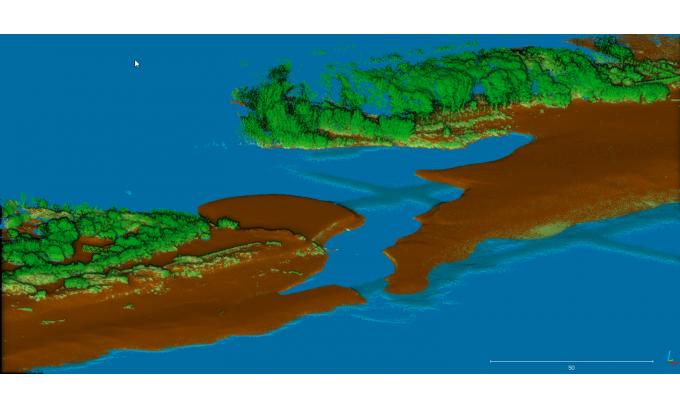We humans have a true want for control. We live in our natural environment, but we have the ability to edit its constituents through calculated effort. For example, we can be a group of people who are able to determine the life of other animal species. This includes whether or not we eat them or if we allow them to go extinct. Based on our actions in terms of environmental construction or degradation, specific species of animals can go extinct or repopulate at exponential rates. So how does technology help us with species regulation?
There are biotic and abiotic factors that work in tandem to regulate the overall survival of different species. Biotic components or factors are any living components that affect other organisms and it shapes an entire ecosystem. This consists of animals that consumer other organisms within their ecosystem as well as any organism that is consumed. This may refer to animal eating animal situations as well animals eating plants. Abiotic components or abiotic factors are non-living chemical as well as physical parts of an environment that affect the living organisms within an ecosystem as a whole. Abiotic factors include rain, wind, temperature, altitude, soil, pollution, nutrients, pH, types of soil, and sunlight. With these biotic and abiotic factors, we can get an overall summary of an ecosystem in a succinct manner.
How can we study these factors and effectively alter our species regulation with LiDar? Species regulation and management require a large spatial accuracy and comprehensive measures of abiotic and biotic factors for us to control or regulate biodiversity. LiDar in our current realm of understanding, has been used on a small scale to analyze terrains and geographical areas for biodiversity. Some researchers currently use LiDar to specifically gain 3D data and species data for macrofungi (mushrooms), lichens, bryophytes, and plants. A lichen is a composite organism that emerges from algae or cyanobacteria living among the filaments of the fungi in a mutually beneficial symbiotic relationship. Bryophytes are small, non-vascular plants, such as mosses, liverworts and hornworts. They play a vital role in regulating ecosystems because they provide an important buffer system for other plants, which live alongside and benefit from the water and nutrients that bryophytes collect.
LiDar and Biomass Applications
LiDar allows us to understand this types of living organisms in terms of categorization. LiDar has the ability to measure things such as point amplitude entropy, shrub layer density, medium-tree later density, as well as variation in biomass. Point amplitude entropy refers to With this information, a biologist or species conservationist may have the proper data on what types of vegetation may be needed to inhibit growth of the land, and this affects the larger ecosystem of our land and its inhabitants. For example, if there is a higher amount of tree density in a jungle environment, predator-prey situations may become trickier, and this may decrease a population of either predator if they are not able to feed properly. This can also lead to a specific animal becoming an invasive species as it flourishes in a new environment due to the structure that is laid out for them.
LiDar and 3D terrain analysis gives us interesting insights and knowledge on how to prepare for the evolution of an ecosystem. When we are able to measure the environment in terms of bioactivity, we can then change it. It now makes me think about reading more biology. It leads a discussion towards bioengineering environments to be “better” by implanting specific animals or plants that can become extremely successful in different ecosystems. It is fascinating and something I’ll study a bit more on my own.
Subscribe to Our Email Newsletter
Stay up-to-date on all the latest news from the 3D printing industry and receive information and offers from third party vendors.
You May Also Like
3D Printing Unpeeled: New Arkema Material for HP, Saddle and Macro MEMS
A new Arkema material for MJF is said to reduce costs per part by up to 25% and have an 85% reusability ratio. HP 3D HR PA 12 S has been...
3D Printing News Briefs, January 20, 2024: FDM, LPBF, Underwater 3D Printer, Racing, & More
We’re starting off with a process certification in today’s 3D Printing News Briefs, and then moving on to research about solute trapping, laser powder bed fusion, and then moving on...
3D Printing Webinar and Event Roundup: December 3, 2023
We’ve got plenty of events and webinars coming up for you this week! Quickparts is having a Manufacturing Roadshow, America Makes is holding a Member Town Hall, Stratafest makes two...
Formnext 2023 Day Three: Slam Dunk
I’m high—high on trade show. I’ve met numerous new faces and reconnected with old friends, creating an absolutely wonderful atmosphere. The excitement is palpable over several emerging developments. The high...


































